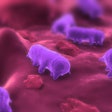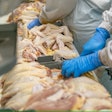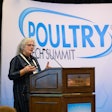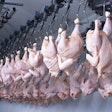
Eggs are not one of the top foods contributing to foodborne illnesses, according to an annual foodborne illness multi-year outbreak report put together by the Interagency Food Safety Analytics Collaboration (IFSAC), a tri-agency group created by the Centers for Disease Control and Prevention (CDC), the Food and Drug Administration (FDA) and the U.S. Department of Agriculture’s (USDA) Food Safety and Inspection Service (FSIS).
The November 2022 report covers outbreaks of Salmonella, Escherichia coli O157 and Listeria monocytogenes using surveillance data from 1998-2020, and for which each confirmed or suspected associated source was assigned to a single food category. However, the method used to analyze the data relies mainly on the most recent five years of the time frame.
The IFSAC’s goal of creating the report was to determine the percentage of foodborne illnesses linked to specific foods and develop preventative measures in the related processes. Additionally, these annual reports allow all three agencies the opportunity to take a consistent approach in identifying which food safety concerns should be of priority to protect the country’s public health.
The categories
Over 75% of Salmonella illnesses were attributed to seven food categories: chicken, fruits, pork, seeded vegetables (such as tomatoes), other produce (such as fungi, herbs, nuts or root vegetables), beef and turkey. Eggs were only linked to 5.7% of Salmonella outbreaks. A major reason that eggs are no longer a contributor to Salmonella related outbreaks is the FDA’s Egg Safety Final Rule, which took effect in 2010.
E. coli O157 illnesses were mostly attributed to vegetable row crops (such as leafy greens) and beef. Over 80% of E. coli illnesses were connected to these two categories, while 0% were attributed to eggs.
Listeria monocytogenes illnesses were mostly attributed to dairy products, fruits and vegetable row crops. While over 75% of illnesses were linked to three categories, and only 3.7% to eggs, the IFSAC explained that the low number of Listeria monocytogenes outbreaks makes these estimates less reliable compared to other pathogens.
The IFSAC classified the foods into 17 categories using a scheme it created that aligns with the U.S. food regulatory agencies’ classification needs.


















